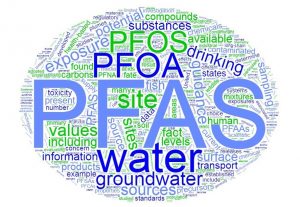Per- and poly- fluoroalkyl (PFAS) substances are a growing concern for biosolids management. A client recently sought our advice to help them manage an historic stockpile of biosolid-type material which contained waste from the textiles industry. Principal Matt Shanahan and Senior Consultant Hilary Hall were able to combine the previous work that had been done to categorise this waste, with up-to-date guidance for PFAS-contaminated materials.
The advice provided included detailed information on:
- The PFAS National Environmental Management Plan (NEMP) and EPA Victoria’s Interim position statement on PFAS
- PFAS analysis, including sampling and testing protocols
- Potential end uses for the contaminated material based on levels of contamination
- On-site storage management, including implications for leachate management
- Treatment options to reduce or remove PFAS contaminants.
Critically, the client was provided with a decision map which navigated how end uses would be determined based on PFAS concentrations.
Further value was added with a training session organised by RMCG. PhD researcher Damien Moodie and his advisor, Dr Brad Clarke, presented in-depth research on PFAS substances found in biosolids. This session included how PFAS substances:
- Interact with organic matter, soil and water
- Bioaccumulate in the food chain
- Biotransform through wastewater treatment plants
- Interact with the environment based on their chain length, and
- Transform into PFOA and PFOS.
If you know or suspect PFAS might be an issue in your biosolids, please contact Hilary Hall on 0422 608 303.
